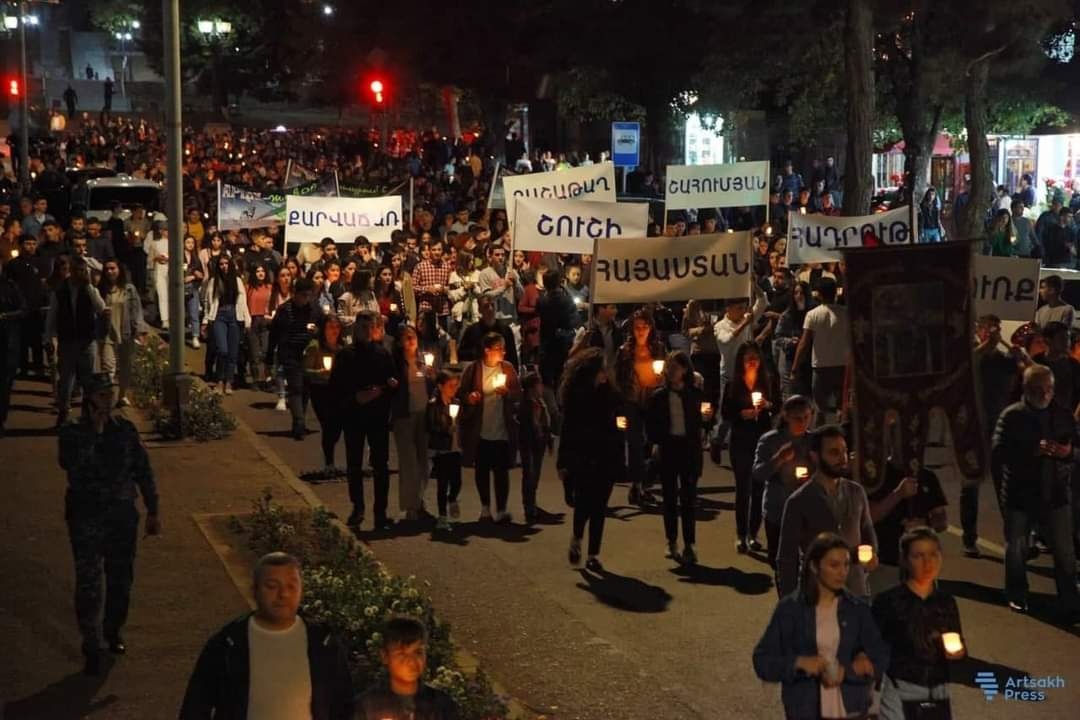Maria Armoudian
The Armenian Weekly
What can be done about the gross human rights violations endured by the Armenian people of Artsakh? Human rights advocates in the US and beyond have offered some clues about creative remedies for redressing grave injustices.
More than 40 years ago, Peter Weiss found one creative way to use US courts for survivors of torture and similarly egregious human rights abuses to find justice. Steeped in both the civil rights and human rights movements, Weiss wedded aspirational and practical ideas from both domains to get some semblance of justice for Joel Filartiga, a Paraguayan doctor whose son had been tortured to death in Paraguay by a member of the Paraguayan military. The core idea in Weiss’ pursuit was “universal jurisdiction,” which argues that some crimes are so heinous that they should not be prosecuted anywhere. To apply the concept for the Filartigas, Weiss and his colleagues found an obscure statute in the US’ first Judiciary Act that granted federal court jurisdiction for aliens if the wrongs they suffered violated the laws of nations. In the end, after an appeal, the US Court of Appeals, Second Circuit decided that torture was, in fact, one of those wrongs. For Joel and his daughter Dolly, the $10 million judgment in their favor was largely symbolic, as collection on these cases can be extraordinarily difficult. Then, decades later, Weiss and his colleagues shifted to do similar cases in Europe.
Read also
What might be some avenues for justice for Armenia and the Armenian survivors of human rights abuses? One year on from Azerbaijan’s and its Turkish ally’s attack on Artsakh, Armenia has sued Azerbaijan in the International Court of Justice for a range of claims, including mass killings and torture. But Armenians and human rights advocates can—and should—consider exploring additional creative ways to get justice for those who have been subjected to egregious human rights abuses—exploring actions against the individuals who enacted the harms, or from those individuals and other entities that aided and abetted such violations.
The recent report by the Human Rights Defender of the Republic of Armenia suggests Azerbaijanis committed egregious human rights violations, including crimes against humanity, physical and psychological torture of POWs and civilian captives. The report said the Armenian captives were electroshocked and beaten with metal chains, gun butts and batons to force disclosure of sensitive information and false confessions. Many sustained injuries, including one person who has been rendered blind, according to the report. It also noted video and photos of beheaded Armenians during the ceasefire period, which can be considered a war crime whether or not the beheading was the cause of their deaths. As of this writing, approximately 45 Armenians remain in Azerbaijani detention, held without trial, while others are still missing, said the report.
Human rights advocates can explore taking action against the individual violators, as is being done in both US and European courts, if the survivor plaintiffs can meet the procedural requirements. In the US, non-profit organizations, such as the Center for Justice and Accountability, were founded specifically to pursue these cases against individual offenders who commit such acts, in part to help the survivors regain lost agency and recover psychologically. In Europe, a range of non-profit organizations do similar work. The European Centre for Constitutional and Human Rights, for example, has coordinated lawsuits and criminal actions across the continent for torture, complicity and aiding and abetting crimes against humanity. In one German case, Syrian opposition group members were charged for a range of crimes, including posing in pictures with severed heads and mutilating an enemy soldier’s body. Although these actions are difficult to bring, creative advocacy can help with jurisdictional and procedural hurdles to find the right forums and ascertain the most important evidence to advance the cause of justice.
Can a person damaged by Azerbaijan’s actions sue Azerbaijan itself? Perhaps, this is among the trickiest scenarios. But despite laws protecting sovereign states, US-based human rights advocates like Scott Gilmore have found creative ways to sue human rights abusing states—and sometimes win. Gilmore won a lawsuit against the Syrian Arab Republic for its 2012 targeted killing of US war correspondent Marie Colvin in Homs, where she was reporting on the war. Represented by Gilmore, Colvin’s sister sued the Bashar al Assad regime in US District Court for the District of Columbia, which found for Colvin and ordered Syria to pay $302.5 million to the family of the slain journalist. While it’s unlikely they can collect on that judgment, the declarative win and the evidence gathered through the process could simultaneously help pave the way for possible prosecutions and serve as moral, symbolic victories.
There are other exceptions to absolute immunity, additional potential defendants, including those who are profiting from the conflict, other forums for which people can seek justice, and ways of finding justice, all of which can and should be explored thoroughly and vigorously until justice is won. In the end, all institutions, jurisdictional hurdles and procedural rules are really ideas that people have decided are important enough to uphold for one reason or another. But if the ideas stand in the way of a more important idea—such as justice for the gravely harmed—advocates have had to rise to the occasion to think beyond the status quo. That’s where creative advocacy and a “no stone unturned” approach to the pathways to justice are critical. And even though the international community has failed to stop the great violence inflicted by Azerbaijan on the people of Artsakh/Nagorno Karabakh, there are still opportunities to enlist them in the cause of repair, redress and restoration for the survivors.




















































